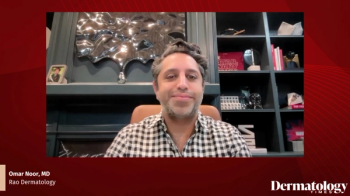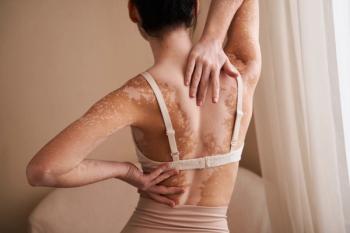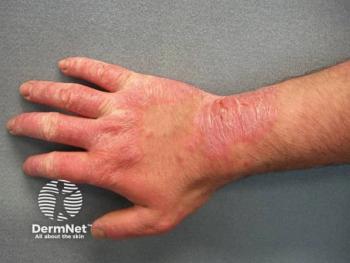
Triple-Combination Acne Gel Demonstrates Long-Term Safety and Efficacy

Key Takeaways
- Cabtreo, a triple-combination topical, showed significant efficacy in treating moderate to severe acne over 24 weeks, with 68% of participants achieving treatment success.
- The study demonstrated notable improvements in acne lesions, scarring, and dyspigmentation, with significant reductions in inflammatory and noninflammatory lesions.
A new study highlights the significant long-term improvements in lesions and scarring of a clindamycin phosphate 1.2%, adapalene 0.15%, and benzoyl peroxide 3.1% formulation.
At the
Background
The formulation, comprised of clindamycin phosphate 1.2%, adapalene 0.15%, and benzoyl peroxide 3.1% (CAB), is the only triple-combination, fixed-dose acne therapy approved by the US Food and Drug Administration.2 Existing phase 2 and 3 trials evaluated the topical over 12 weeks, in which 50% of participants achieved treatment success with inflammatory lesions decreasing by >70%. This new study lasted 24 weeks, which is more representative of real-world treatment. Draelos and researchers assessed the long-term safety of CAB and its ability to improve acne lesions, sequelae, scarring, and dyspigmentation.
Methods
The single-center, open-label trial included 25 participants > 12 years old with moderate to severe acne at baseline, correlating to an Investigator’s Global Assessment (IGA) score of 3 or 4. The mean age was 23.9 years and approximately 80% of the patients were female. All Fitzpatrick skin types were represented with 18 African American patients, 6 Caucasian patients, and 1 Asian patient. Over 55% had a Fitzpatrick skin type between V and VI. Participants applied the CAB therapy once a day.
The primary endpoint was the improvement in IGA from baseline, while the secondary endpoint was the reduction in inflammatory and noninflammatory lesions. Investigators also assessed acne scarring (via the Goodman Qualitative Scar Scale), postinflammatory hyperpigmentation, postinflammatory erythema, dryness, as well as any safety and tolerability factors, including itching, burning, redness, and swelling.
Results
After 24 weeks, 68% of patients achieved treatment success. The reductions in IGA were significant from week 4 to week 24 (p < 0.001). Lesion counts also decreased, with notable observations being seen as early as week 4. This improvement continued to the end of the trial (p < 0.001). Noninflammatory lesions were reduced by 70% and inflammatory lesions were reduced by 89% at the conclusion of the study.
Facial scarring also began to improve at week 12, with a total improvement of 33% at week 24. Dyspigmentation levels were also significantly improved early in the study. From baseline, postinflammatory hyperpigmentation was reduced by 77% and postinflammatory erythema was reduced by 84%. Initial results were first noted as early as week 4. Additionally, skin dryness did not increase. Poster photographs of 2 patients demonstrated these improvements.
Regarding safety, no adverse events or issues with tolerability were reported. Mean scores post-treatment in swelling ranged from 0 to 0.08, while itching ranged from 0 to 0.16, and redness and burning ranged from 0 to 0.24. With these scales, 0 equaled none and 1 equaled minimal.
Conclusion
This trial confirms the long-term safety and efficacy of the CAB topical therapy, expanding on existing data from 12 weeks of clinical treatment. Positive and lasting improvements in lesions, scarring, postinflammatory hyperpigmentation, and postinflammatory erythema were qualitatively observed. The safety and tolerability profile also aligned with the past findings.
“[The] combination acne therapy has an excellent 6-month efficacy and safety profile,” Draelos told Dermatology Times, “CAB gel is an appropriate and effective option for the long-term treatment of acne vulgaris.”
References
1. Draelos, Z. Long-Term Efficacy and Tolerability of Clindamycin Phosphate 1.2%/Adapalene 0.15%/Benzoyl Peroxide 3.1% for Acne: A 24-Week Trial. Poster presented at the 2025 Music City SCALE meeting; May 14-18, 2025; Nashville, Tennessee.
2. Cabtreo (clindamycin phosphate, adapalene, and benzoyl peroxide gel). Full Prescribing Information. Ortho Dermatologics; 2023.
Newsletter
Like what you’re reading? Subscribe to Dermatology Times for weekly updates on therapies, innovations, and real-world practice tips.



















